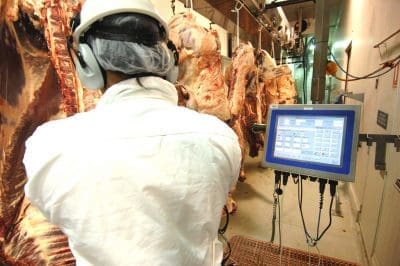TWO very different influences have driven a 10-20c/kg lift in slaughter grid offers in some parts of the country this week – ‘Mexicans’, and the ‘Beef 2024 effect.’

‘Mexicans’ refers to the arrival, in numbers, of southern states processors looking for northern slaughter cattle, given a big price differential that’s emerging between north and south due to local supply.
There’s nothing particularly unusual in that – it happens most winters and may be only a touch earlier than normal this year – but there was little evidence of it last year due to ample cattle hitting the market in southern parts of Australia.
Hoards of ‘gringos wearing sombreros’ from south of the border were seen at Roma store sale this morning, and there’s been plenty of paddock and over-the-scales sales at local selling centres going on, since early May, contacts say. Se processor grid quotes below for the reasons why.
The hangover (both metaphorically and figuratively speaking) was clearly seen at Roma store sale this morning, where only 4884 head were yarded
The second influence was the sheer vacuum left by the Beef 2024 event last week, where tens of thousands of cattle men and women from across eastern Australia put away their drafting canes for a week, and headed to Rockhampton for some learning, refreshment and fellowship. The hangover (both metaphorically and figuratively speaking) was clearly seen at Roma store sale this morning, where only 4884 head were yarded.
Some grids surge
Combined, these two factors, plus some lingering rain influences, have pushed most southern and some Central Queensland grids 10-20c/kg higher. Rain in parts of northwest and western Queensland last week did see some sizeable cancellations of deliveries, including one large run of 500 ox for one company, due for Monday’s kill that got cancelled on Sunday morning due to weather around Tambo.
 “The problem at present is, after so much earlier weather, 40mm equates to 150mm under normal conditions,” one frustrated cattle buyer contact said. “It doesn’t take much to get back to access problems when the ground is still wet.”
“The problem at present is, after so much earlier weather, 40mm equates to 150mm under normal conditions,” one frustrated cattle buyer contact said. “It doesn’t take much to get back to access problems when the ground is still wet.”
In southern parts of Queensland, competitive processors this week have good quality heavy cows at 460c/kg and four-tooth grass ox at 520-530c/kg with implant – up 10-20c. Some multi-site processors have left their previous Central Queensland grids intact, and have in fact dropped offers by 10c/kg in Townsville, due to plentiful local regional supply.
Most Queensland processors appear to have the next fortnight’s kills reasonably well covered, with more spaces available week commencing 27 May.
First frosts catalyst
So far, the big surge in northern and western turnoff cattle predicted for May-June has not eventuated, but one contact pointed to the arrival of first frosts as a likely catalyst.
“Cold weather will knock feed around, and that often provides the stimulus for sale decisions – and there’s cold weather forecast for next week,” he said.
Further south, we’ve seen grids in southern NSW offering 10c/kg more on grass ox this week, offering 570c/kg on four-tooth, with cows unchanged on 480c. Eastern regions of South Australia are unchanged with offers of 550c on ox and 520c on cows. Lack of rain in the region is a factor.
Those quotes explain why southern processors like Hardwicks, O’Connor, Midfield, AMG, Bindaree and others are poking around north looking for stock, with a 20-30c/kg freight bill to get them home in some cases. In some comparisons, a 40-60c/kg split is evident between Queensland and southern states’ prices, especially via saleyards.
The nation’s two largest beef processors – JBS and Teys – both held large private functions for suppliers and customers in Rockhampton during Beef 2024 last week. Neither provided any significant new information on the state of play in supply and demand, dwelling mostly on the now well-established opportunities ahead in the United States, consumer responses and the promising outlook for the next few months, season-wise.
Kills maintain elevated pace
Weekly national slaughter continues at an elevated level in May, notwithstanding last Monday’s Labour Day holiday in Queensland that took almost 11,000 head off the state and national tally.
The seven days ended Friday saw a national weekly kill of 129,045, down only 5.7pc from the 2024 season-high of 136,945 head a week earlier.
Females continue to occupy a disproportionate percentage of the national kill, accounting for 53.41pc last week – the highest FSR all year. Victoria recorded a female kill ratio of an extraordinary 74.5pc, but dairy played a significant part. In NSW, females occupied 57.5pc of slaughter, and in Queensland, 45.3pc (Queensland FSR is inevitably lighter-on than other states, because of the presence of southern-state bred feeder steers entering Queensland feedlots in large numbers, and ending up on the Queensland books.

The Bureau of Meteorology has just announced a La Nina watch. (some scientists have suggested La Nina’s may become more common as time goes on) Bad news for the Americas continent as that means a higher chance of drought.
If that region of the world has another drought, that could lead to potential higher prices for Australian producers, but only if export processors pass it on. Looking at the prices for Central Queensland and North Queensland, looks like the biggest mostly foreign owned companies are dragging the chain on offering fair prices for producers, despite their ESG statements on their website.